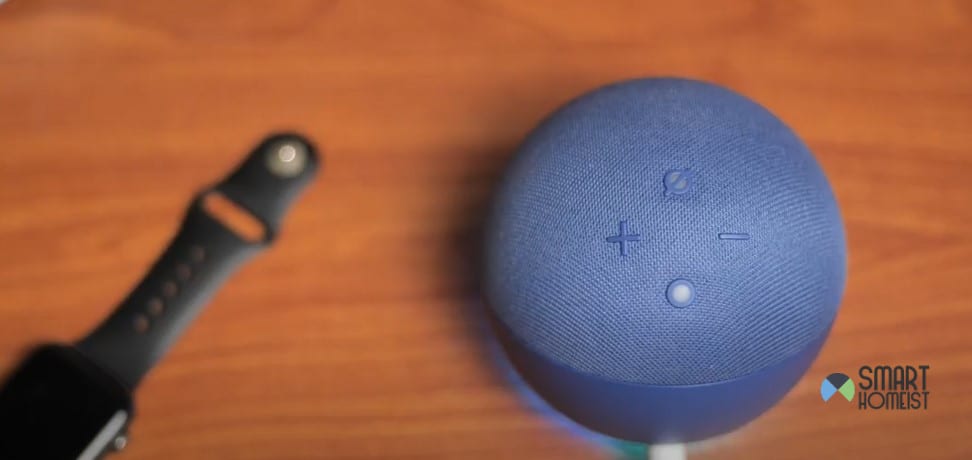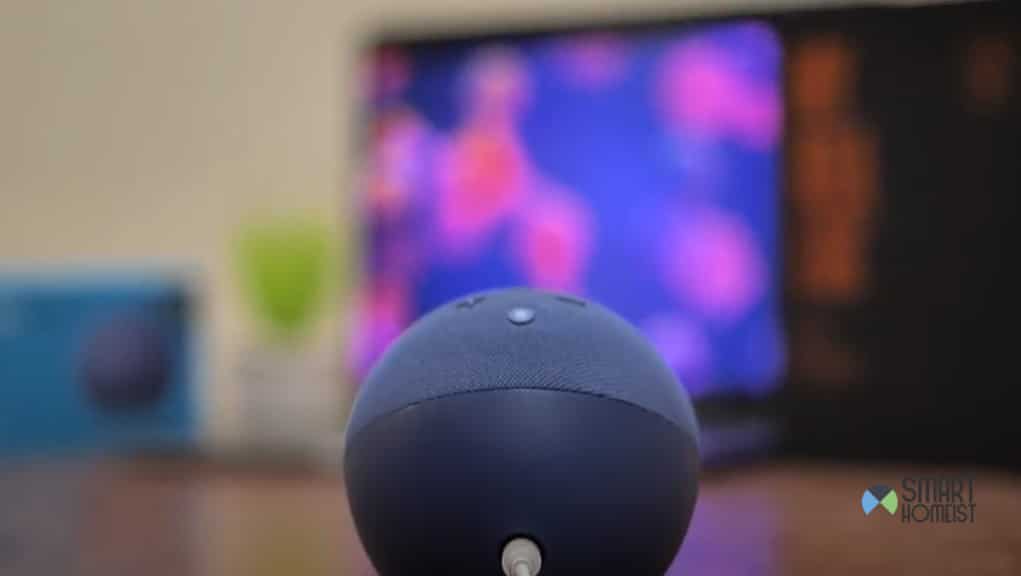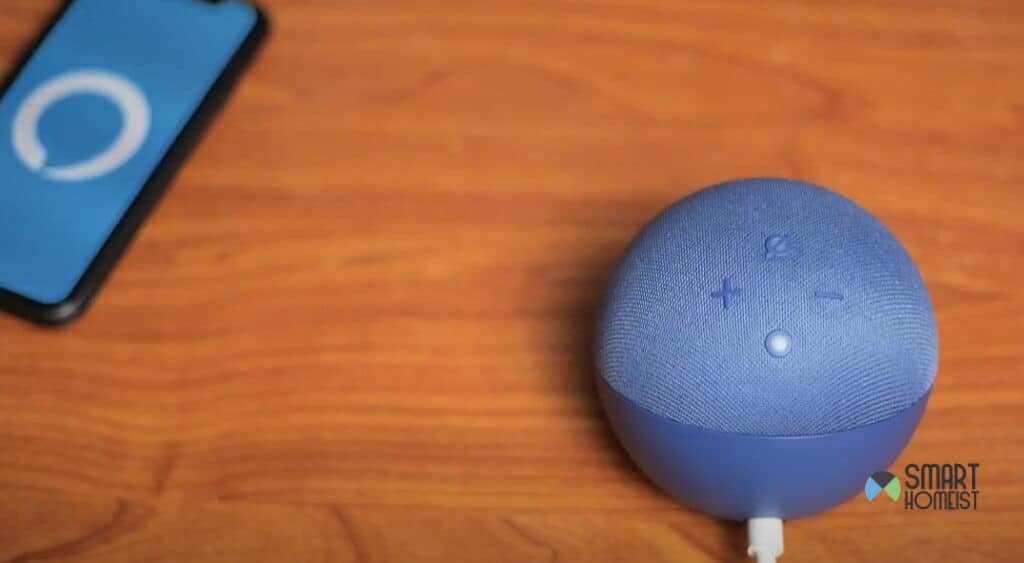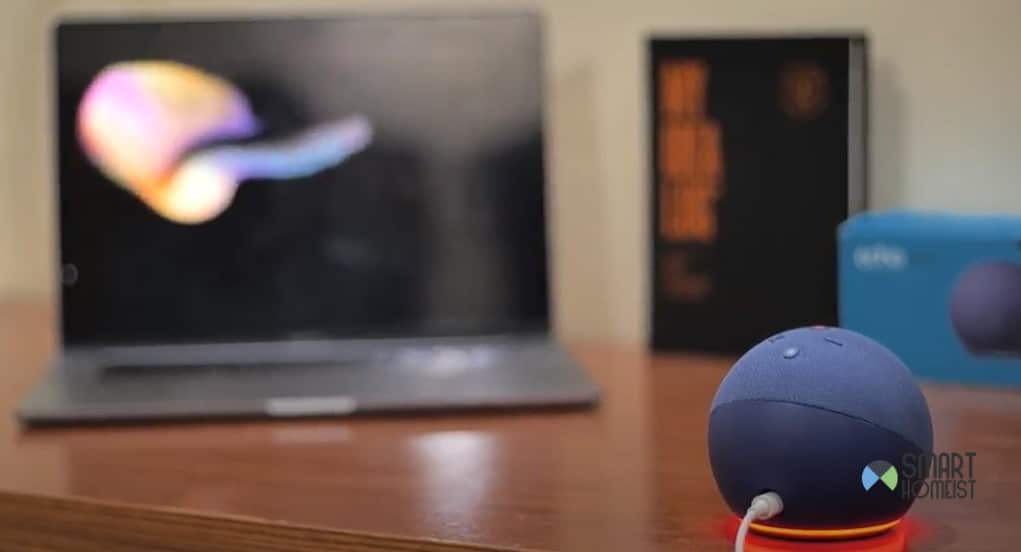
While Amazon does a great job at updating their older versions of the Alexa Echo Dot, there will always be one or more features that’ll be exclusive to their latest lineup. These features can sometimes span from better hardware to some minor tweaks.
However, when we are talking about the fifth generation of the Alexa Echo Dot, this device reigns far above any other option that I’ve seen on the market. It is beyond amazing, to say the least, and I am in love with its design and utility.
The best thing about this device is that it has a temperature sensor. I don’t have to pair up a separate sensor to get some stats on the temperature. All that I have to do is to ask the Alexa unit to tell me the room temperature, and it announces the accurate room temperature right away.
Can Alexa Monitor Room Temperature?
Now, if you’re asking, “Can Alexa Monitor Room Temperature?” The answer is “Yes.” I personally love this feature, and it helps me a ton when it comes to regulating the living room temperature. However, I have yet to figure out how to change the unit scale from Fahrenheit to Celcius.
Anyhow, the room temperature feature is limited to the 5th generation of the Echo Dot. Even if you have the 3rd or even 4th generation of the Echo Dot unit, it will not be able to update you regarding the room temperature. So, you might be a bit out of luck if you’re sitting on outdated devices.
Still, there are a few workarounds that I’ve seen people implementing every now and then. The most effective solution to get the room temperature even when you’re missing the sensors inside the older Echo Dot is to connect an external sensor.
You can get some temperature sensors for your room. Make sure that they are compatible with Alexa, and then pair them right up. From there, you can get an accurate temperature reading from the external sensors, and Alexa will communicate with these sensors to announce the right time.
You don’t have to limit yourself to the hardware when you can get more accessories for a cheaper price tag. All that you gotta do is spend a few bucks on the sensor accessory, and you’re sorted out. So, be sure to figure out what temperature sensor falls within your budget.
One thing that I will mention here is that you should think about getting this sensor installed by an expert. There are a ton of things that you can mess up when it comes to sensor placement. So, if you’re thinking of getting some for the whole house, just hire a local contractor, and he will help you.
The Utility
You might think that what’s so great about asking Alexa to monitor room temperature, right? Well, this feature is not only to expand your knowledge of the internal room temperature. Instead, you can pair up the sensors with the thermostat to help you with better management of your house temperature.
Every comfy house has a foundation of a decent thermostat that is linked with multiple sensors. The use of the Alexa Echo Dot fifth generation eliminates the need for extra sensors. However, if you don’t have the latest Echo Dot unit, then be sure to grab a couple of sensors for each room.
Along with the comfort aspect of things, you also gotta keep in mind the electricity bill. If the thermostat can’t get stats from the sensors, you won’t be able to limit the cooling/heating to different sections of your house.
I assume that you understand that the HVAC system contributes almost 65 percent of your total electricity bill. So, if you’ve yet to figure out how to manage the HVAC system, now might be a good time to invest in some sensors.
The upside here is that once all the sensors are installed, you can ask Alexa to monitor the room temperature in different rooms. All that you have to do is to specify the name, like “living room” or “guest room” and so on. That way, you can also adjust the thermostat manually.
Everything boils down to how you’re planning on modifying your smart system. If you’re new to the game, I’ll suggest that you spend a few extra bucks on hiring a local professional. Asking local contractors for help is the best idea for beginners, and you will be able to save a fair bit of time that way.
Lastly, do reach out to Amazon support if your Alexa Echo Dot fifth generation won’t announce the room temperature. There can be a few bugs in this unit from time to time. However, these bugs are fixable with a quick power cycle. Still, you should engage official support if you remain stuck in these errors.
Note: Sometimes, the room temperature can be inaccurate even with the 5th generation of Alexa Echo Dot. However, this issue is linked to the placement and positioning of the Echo Dot rather than the programming errors. You gotta make sure that your unit is in the middle of the room.
From there, you need to check if it is in contact with any metal objects or is placed near a furnace or a vent. All that you’re trying to do is to find a stable spot in the room where the temperature is not too high or too low and is relatively moderate.
Yes, it will take a bit of trial and error, but you’re not left with many options. You’ll have to go through this hassle only once, and the rest is simple. However, if you want to avoid this hassle or believe that there are some issues with the Echo Dot, then I recommend reaching out to Amazon support.
Similarly, you can also try some basic fixes, like resetting the Echo Dot or giving it a quick power cycle. Hopefully, you will not have to bother more with these features, and fixing the unit will come easily to you. So, have that in mind when you’re stuck.
The Takeaway
The Echo Dot 5th genetic device has really changed the game when it comes to optimizing and improving the smart ecosystem. You’ll get so much more out of this device, especially the temperature sensors that are included in the system.
Even the 4th generation systems lack these features, and they won’t be able to tell you the temperature. So, if you’re new to the game and thinking of purchasing an Echo unit to tell you the temperature, going with the Echo Dot fifth generation is the only real option.
However, if you’ve already made the purchase and don’t want to spend the money or the time to get your system on the fifth generation, then you can always get some external sensors. There is no need to stick with the internal sensors, and you can still secure a good enough performance with accessories.
Just make sure that you install all the sensor accessories correctly and pair them up with your Alexa 4th or 3rd generation. From there, everything is simple, and you can just ask the Alexa unit to announce the room temperature along with the room name, and it will tell you about the temperature right away.





